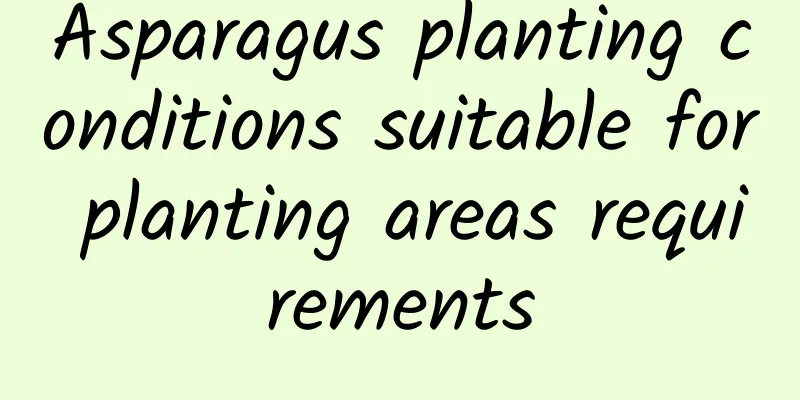Spring peanut planting time and method

|
Spring peanuts can be said to be a crop that farmers have a wide planting range and a large planting area. However, many people do not know the specific time and methods for planting spring peanuts. Let's learn about the planting time and methods of spring peanuts. Spring peanut planting time In terms of sowing time, spring peanuts are generally planted from February to May. In the southern regions with higher temperatures, they are generally planted from mid-February to mid-to-early March, and in the northern regions where the temperature rises later, they are generally planted from mid-April to mid-to-early May. Among them, the spring and autumn peanuts that are harvested twice a year in the southern region are more suitable for sowing in February and March, the Huanghuai region, the middle and lower reaches of the Yangtze River and the Yunnan-Guizhou Plateau are more suitable for sowing in March and April, and the Northwest and Northeast regions are more suitable for sowing from mid-to-late April to mid-to-early May. How to plant spring peanuts 1. Choose good varieties Before planting, carefully select varieties suitable for local cultivation. At present, the main varieties of spring peanuts planted in the Central Plains include Yuhua 9719, 9326, 37, Luhua 9, 14, Huayu 33 and Yuanza 9102. 2. Ridging Ridge planting of peanuts is a high-yield measure that changes the previous flat-land planting habit. Ridge planting can increase the thickness of the soil layer and improve the ground temperature. It can also conserve water and prevent drought, and ensure smooth drainage and prevent waterlogging. Plant single row ridges: medium-ripening medium-fruit variety, ridge width is 40 cm, ridge height is 10 cm, hole spacing is 14 to 15 cm. For large-fruit varieties, the ridge width is 45 cm, the ridge height is 12 cm, and the hole spacing is 17 to 18 cm. Plant double rows of ridges: medium-ripening and medium-fruit varieties, ridge width 80 cm, ridge height 12 cm, ridge furrow width 30 cm, ridge surface width 50 cm, 2 rows of peanuts planted on the ridge surface, small row 30 cm, large row 50 cm, hole spacing 15 cm. A large-fruit, late-maturing variety, with ridge height of 15 cm, ridge width of 90 cm, ridge furrow of 30 cm, ridge surface width of 60 cm, two rows of peanuts are planted, with a large row of 60 cm and a small row of 30 cm, and hole spacing of 18 to 19 cm. 3. Planting seeds 3 to 5 days before sowing, peel the peanuts. The peeled seed kernels can be mixed with 25% carbendazim wettable powder, or with a special peanut seed dressing agent. Use manual or mechanical trenches (holes) to evenly sow the peanut seeds , put 2 seeds in each hole, cover with about 5 cm of soil, and water to keep moist. 4. Seedling management After the peanut seedlings are basically fully grown, a comprehensive seedling inspection should be carried out and the germination should be accelerated and replanted. Clearing should be done immediately after the seedlings have all grown. The depth of clearing the plants should be such that the cotyledon nodes are exposed above the soil surface. After clearing the peanut plants, they need to go through a period of growth so that the seedlings can grow healthily. Top dressing for peanuts is a supplementary measure for insufficient basal fertilizer and should be determined based on soil fertility, amount of basal fertilizer and peanut growth conditions. Peanut fields that have been fertilized with sufficient base fertilizer generally do not require top dressing. 5. Cultivation and soil cultivation The first tillage should be done when the peanut seedlings are basically all grown and before the plants are cleared. The tillage should be deep to break up the soil compaction layer. The second tillage should be carried out 15 to 20 days after clearing the plants. The third tillage. It should be combined with soil cultivation. Generally, before the peanut rows are closed and a large number of fruit needles are inserted into the soil, the soil between the rows should be cultivated to the outer edge of the ridge top to shorten the distance that the high-node fruit needles enter the soil, which is conducive to the fruit needles to penetrate deeply. That’s it |
<<: How to water Jade Plant in winter? Can it be pruned in winter?
Recommend
The best time to repot green plants and precautions When is the best time to repot green plants
The right time to repot green plants The best tim...
How to plant ivy? Planting time and method
Ivy Planting Time The time for planting ivy is ge...
Plant these plants all over your home to enjoy greenery all year round!
Money Tree The money tree likes warmth and humidi...
How to grow the love vine in winter, it will be super beautiful if you grow it this way!
How to keep it in winter? Environment selection I...
What to do if the bulb of Gloxinia rots
Gloxinia rot ball Gloxinia is easy to rot. When g...
How to propagate gray lily by cuttings
1. Cutting time The cutting time of gray lily is ...
Functions and effects of Kalanchoe
Beautification and ornamental effect Kalanchoe is...
How to grow Daphne koreana in pots in winter
Tip 1. Soil It is important to keep in mind that ...
What are the pests of Milan flowers?
Introduction of Milan Flower Milan, also known as...
How to plant azalea seedlings to achieve a high survival rate, and what is the appropriate spacing between seedlings?
1. How to plant 1. Time: If you want the azalea s...
How to cultivate green diamonds
1. Soil Although green diamonds do not have high ...
Cedar cultivation methods and precautions
How to grow cedar Moisture Management Cedar has a...
How to propagate sea daffodils
Cuttings of sea daffodils The time for cuttings o...
What to do if the leaves of the peace lily turn yellow from the bottom
1. Treatment methods Once you find that the leave...
Does gardenia need pruning? When is the best time to prune?
Many people like to grow gardenias because their ...









